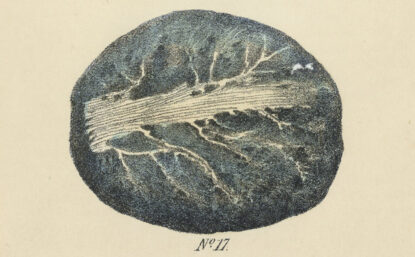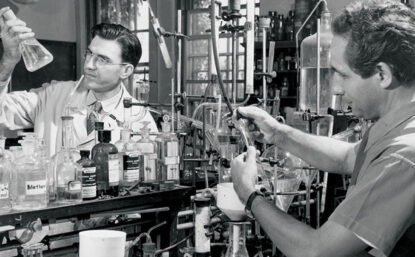Poisons and Panaceas: Inside the 19th-Century Medicine Cabinet
This ExhibitLab uncovers the fine line between deadly and lifesaving in the world of modern medicine.
On view May 1, 2024–October 26, 2024
Horiba Exhibit Hall
“Only the dose makes the poison” is a common saying in toxicology. This ExhibitLab uncovers that fine line between deadly and lifesaving in the world of modern medicine by highlighting the rise of the pharmaceutical industry from the 19th century into the early 1920s.
Artifacts such as Dr. Pierce’s Favorite Prescription Tonic for Menstrual Pain, Charles Millspaugh’s Medicinal Plants, Eli Lilly & Company’s Hand Book of Pharmacy and Therapeutics, and an assortment of risky medicines reveal the industry’s surprising link to herbal and alternative remedies.
Poisons and Panaceas was curated by Nandini Subramaniam with assistance from Molly Sampson and Ashley Augustyniak.
About ExhibitLab
ExhibitLab is the Science History Institute’s space in the Horiba Exhibit Hall for small, focused displays that showcase specific collections, prototype new ideas, or respond to current events. Our staff members, fellows, and school and community partners curate these displays.
For more information about ExhibitLab, please contact Molly Sampson at msampson@sciencehistory.org.
Featured image: Bottles of Chocolate-Flavored Medicines, part of Eli Lilly & Company’s Hand Book of Pharmacy and Therapeutics, ca. 1919.
You might also like

DIGITAL EXHIBITIONS
Sherlock Holmes and the Case of the Poisonous Plants
Arthur Conan Doyle’s stories from 1887 to 1927 open a window to the history of medicine and empire.

DISTILLATIONS MAGAZINE
No Ill Nature: The Surprising History and Science of Poison Ivy and Its Relatives
Do you think of poison ivy as a scurrilous weed to be avoided at all costs? Think again!

THE DISAPPEARING SPOON PODCAST
The Lifesaving Rat Poison
Follow blood thinner warfarin’s unlikely journey from moldy clover and cow killer to lifesaving drug.
Horiba Exhibit Hall is named for Japanese businessman and 2006 Pittcon Heritage Award winner Masao Horiba (1924–2015), founder of Horiba Radio Laboratory, now Horiba Ltd., a manufacturer of advanced analytical and measurement technology.
